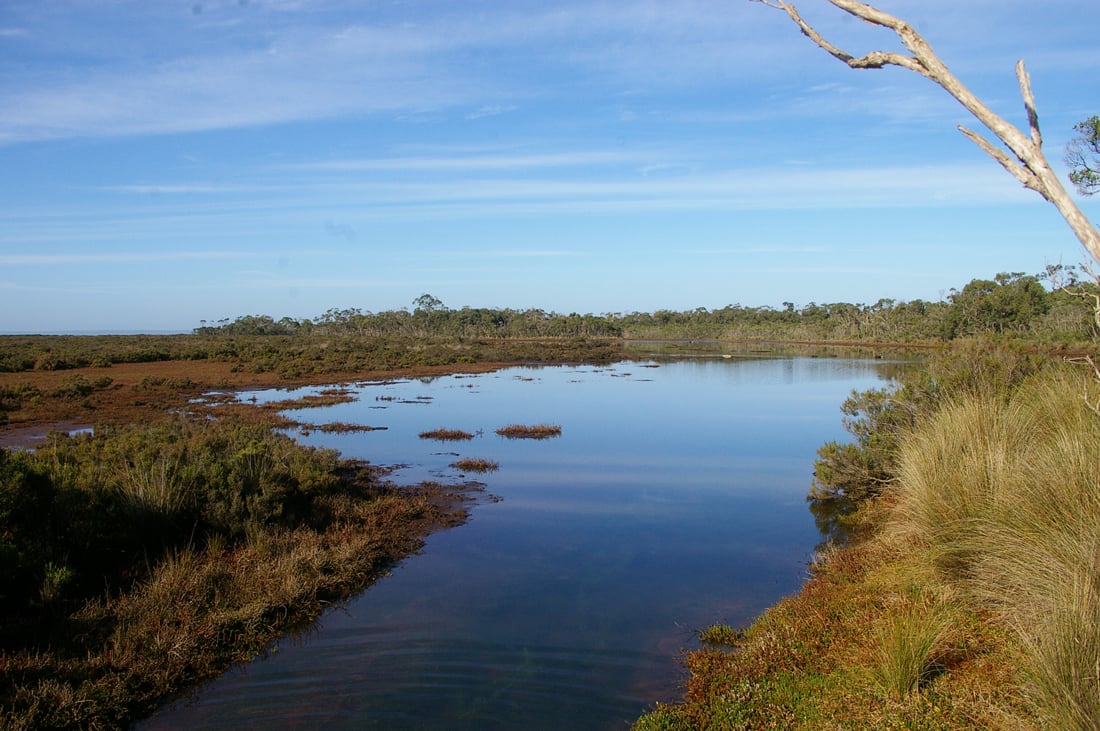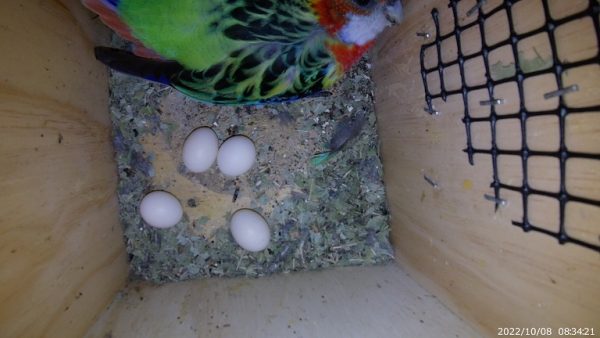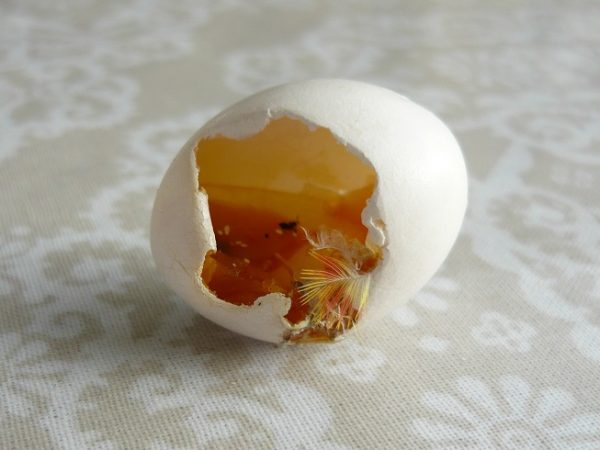

Eastern Rosella in nesting box with eggs

Rosella egg broken by Indian Myna
By Michael Mann, volunteer
It has long been suspected that the introduced species of Indian Myna and Starling are threatening indigenous bird populations through behaviours such as taking over nesting hollows and destroying eggs and chicks. For the last 15 years I have been working (as a volunteer) with the Rangers at Darebin Parklands in Alphington in reducing the numbers of Indian Mynas in the Park.
I have lived in Hastings for 5 years and found that Indian Mynas and also Starlings are a problem in my garden. Over the last few years, I have been trapping Starlings and Indian Mynas on my property and in 2022 I decided to investigate further by installing several nest boxes in the Hastings and surrounding areas as a pilot study in conjunction with WP Biosphere to see to what extent the Indian Mynas and Starlings are a problem on the Mornington Peninsula. I would like to share with you my methodology and findings to date. I will continue to monitor and collect data through 2023 to build a better understanding of the actual risks these species pose, and to begin to formulate strategies to manage populations going forward.
Nest boxes designed to house species such as Eastern Rosellas, Kingfishers, and smaller parrots, were erected in trees across two properties. I also included a friend’s property where I had made and erected nest boxes a while ago and my own nest boxes in my garden, in this pilot study.
Over the course of the 2022 nesting season, several examples of how Indian Mynas and Starlings impact indigenous species were observed. Firstly, many of the boxes on one of the properties had Starling and Indian Myna nests in them, demonstrating one of the ways they outcompete other species. Secondly, we found evidence of eggs being stolen and destroyed. I caught an Indian Myna pecking and removing an Eastern Rosella egg, on video, in one of my own nest boxes. Luckily the Rosella went on and laid 7 more eggs. All the peck marks on the destroyed eggs appear to be from Indian Mynas, but it’s not yet clear if this is something Starlings do, or whether they just outcompete local species by taking over nesting boxes and nesting hollows.
The new nest boxes in this study, put up at the beginning of the nesting season, only had two occupants, both Eastern Rosellas, and both had their eggs destroyed by what I suspect to be Indian Mynas. However, I trapped Indian Mynas in three of the older nest boxes and this has resulted in three pairs of Eastern Rosellas nesting and eight healthy chicks being raised this year.
I have more nest boxes ready for the next nesting season, which are going to be placed in properties in the area. I look forward to continuing to observe the habits of these introduced birds and creating evidence-based strategies for managing populations to help protect and conserve local species, including parrots, rosellas, and kingfishers, into the future.